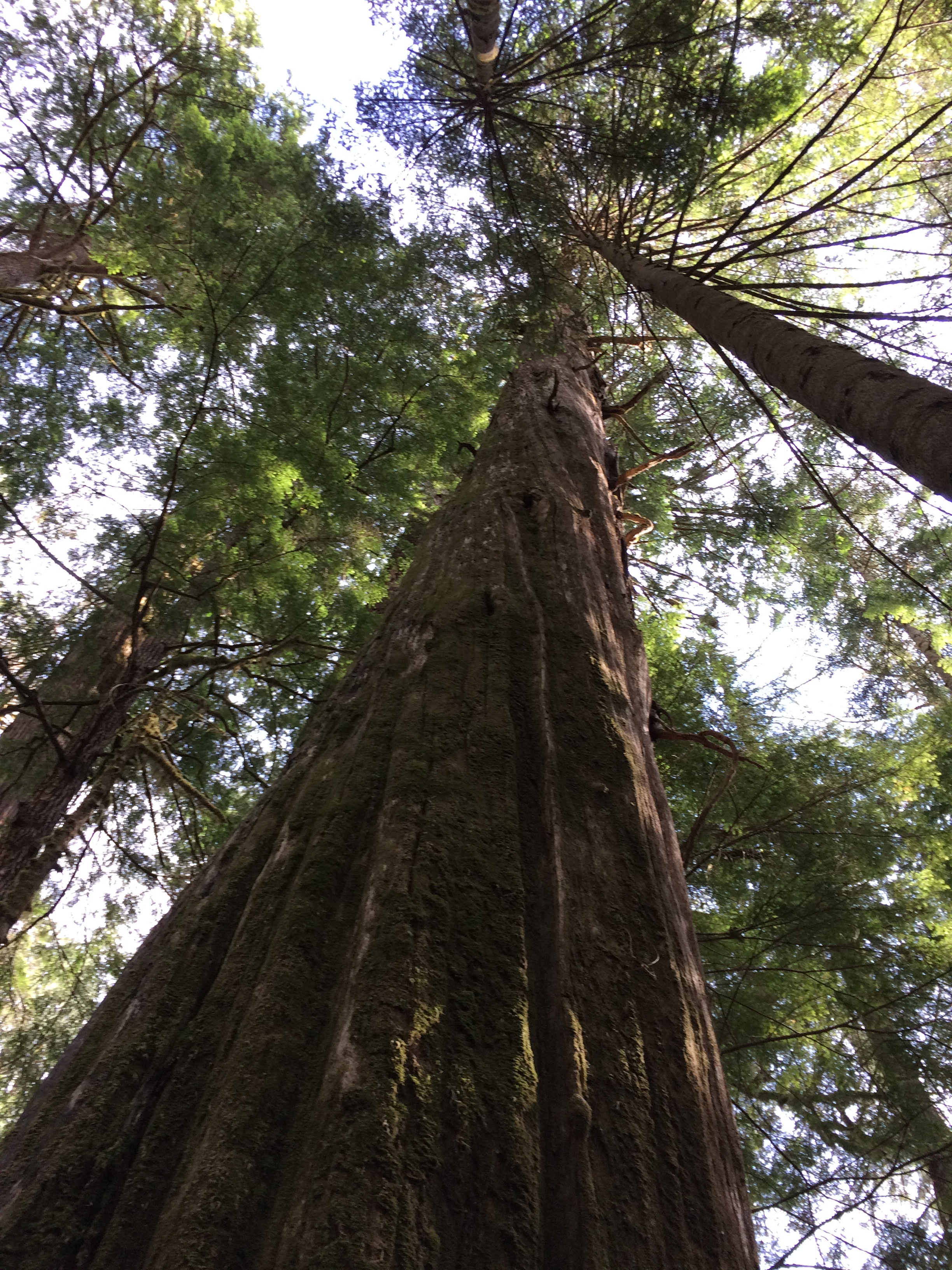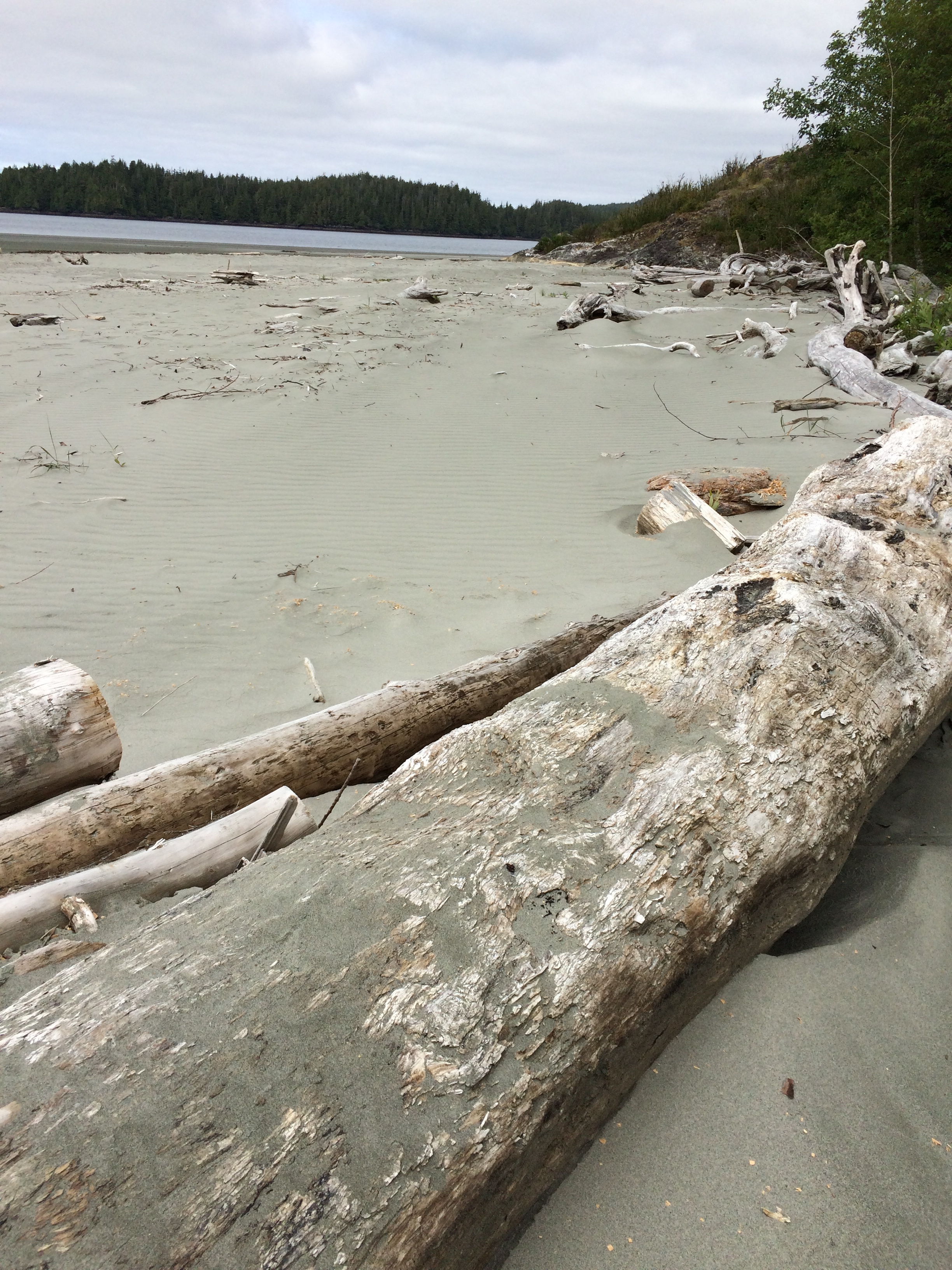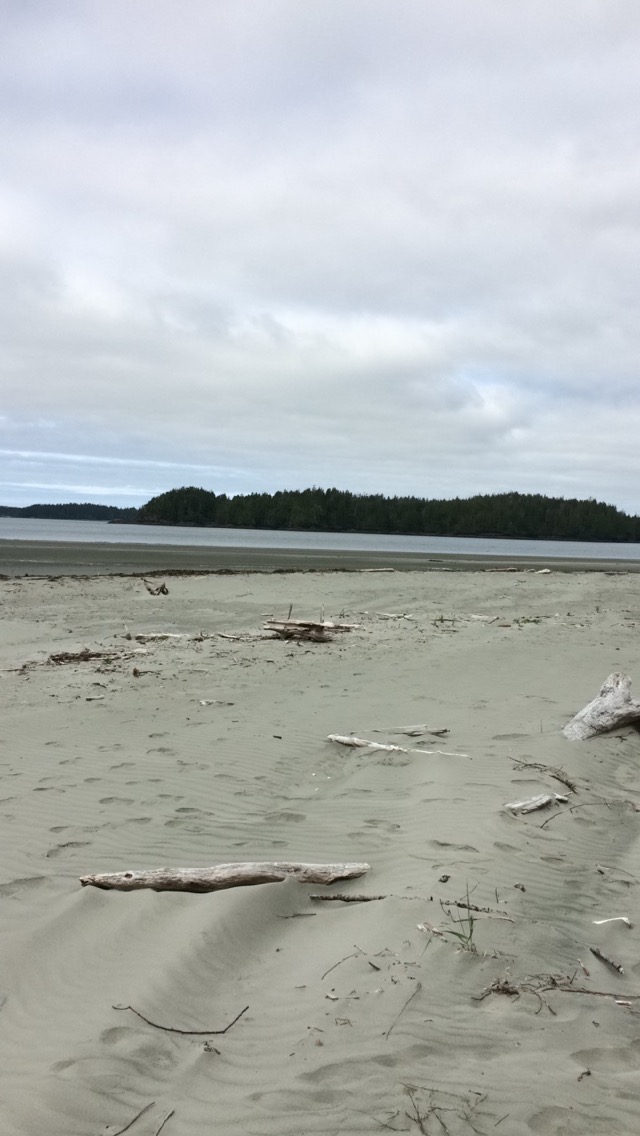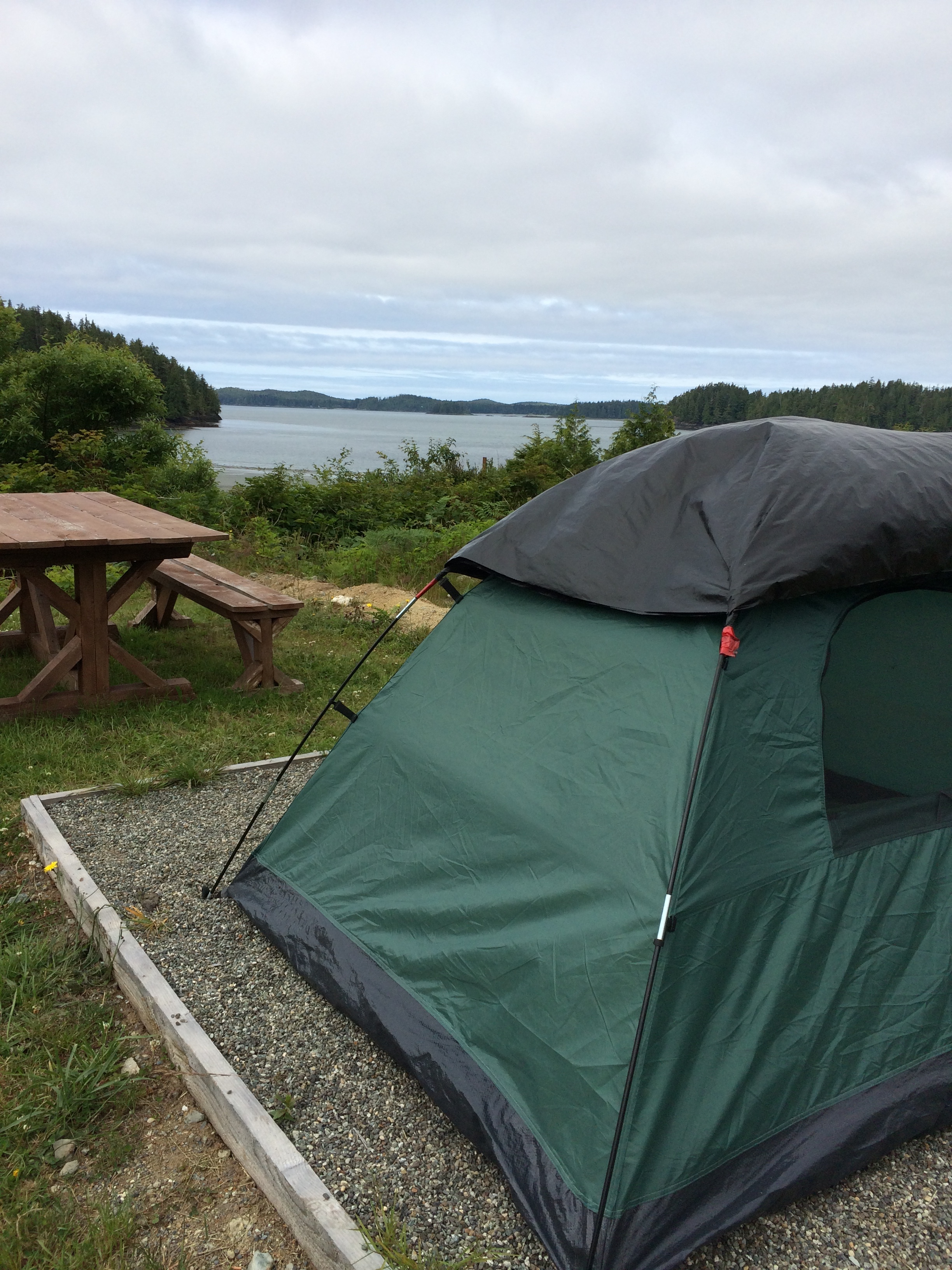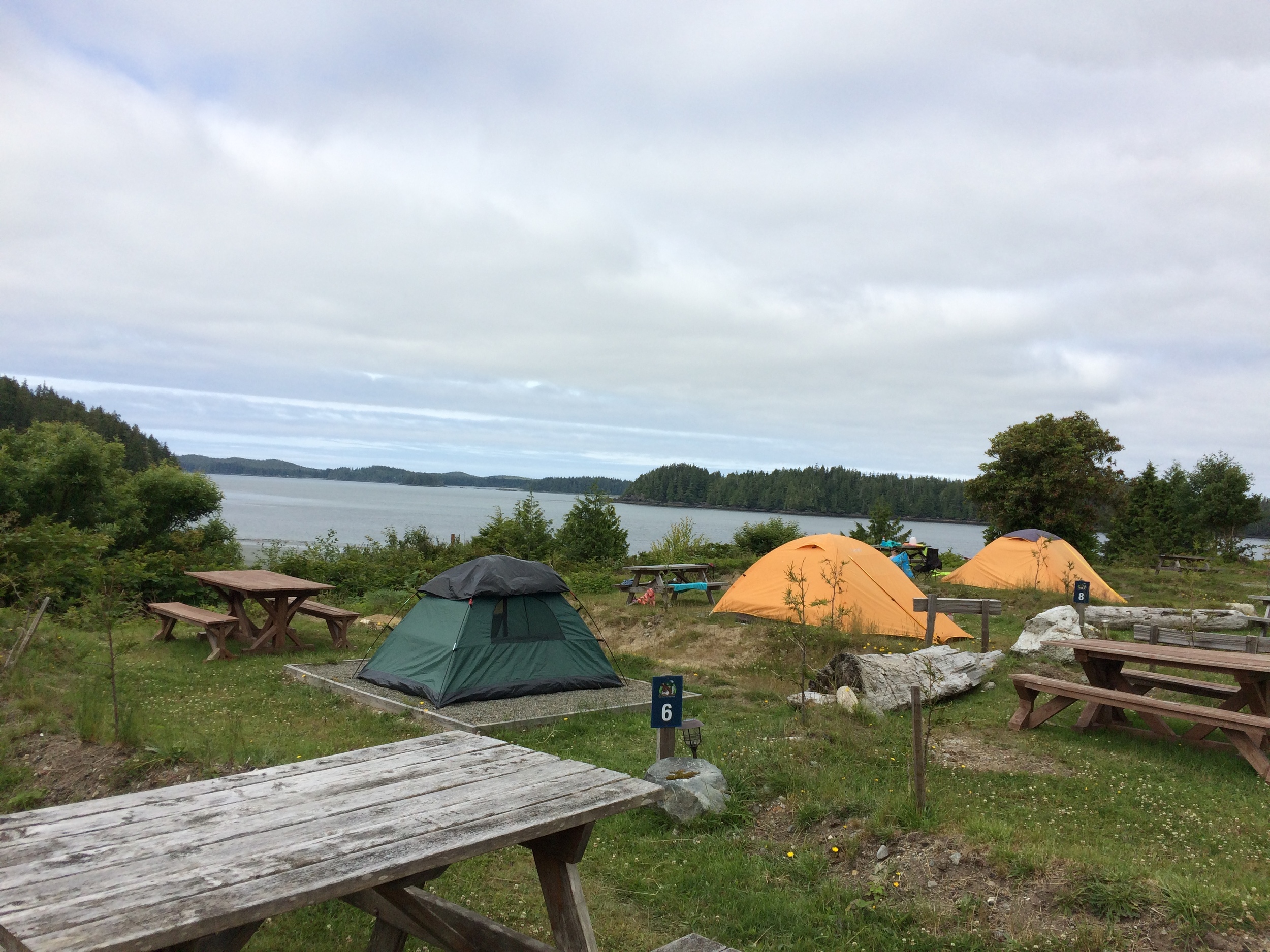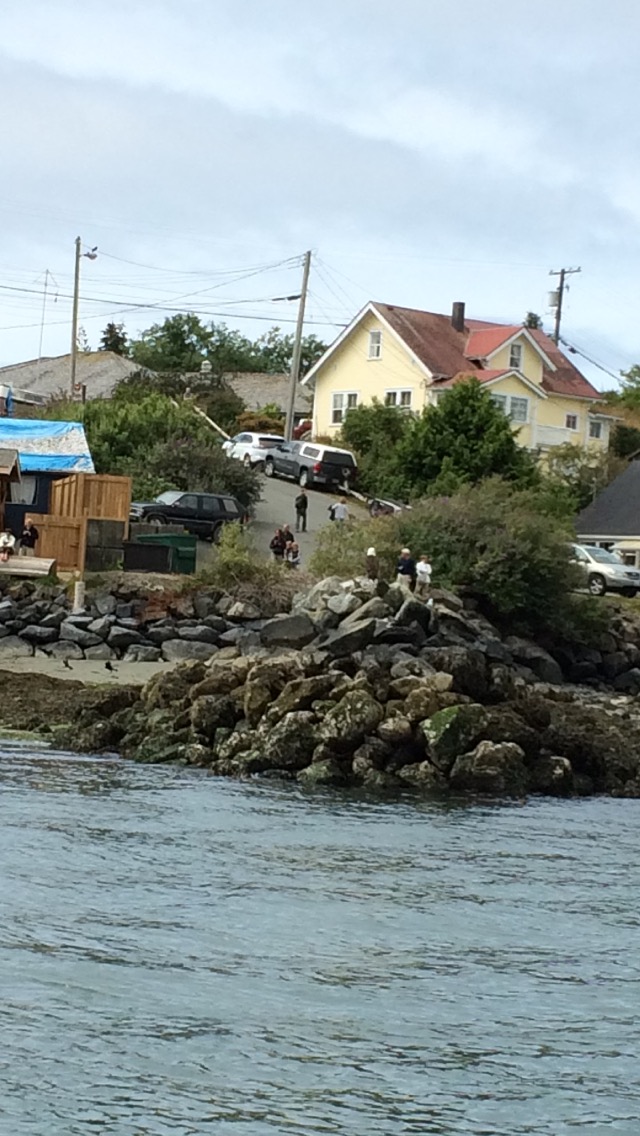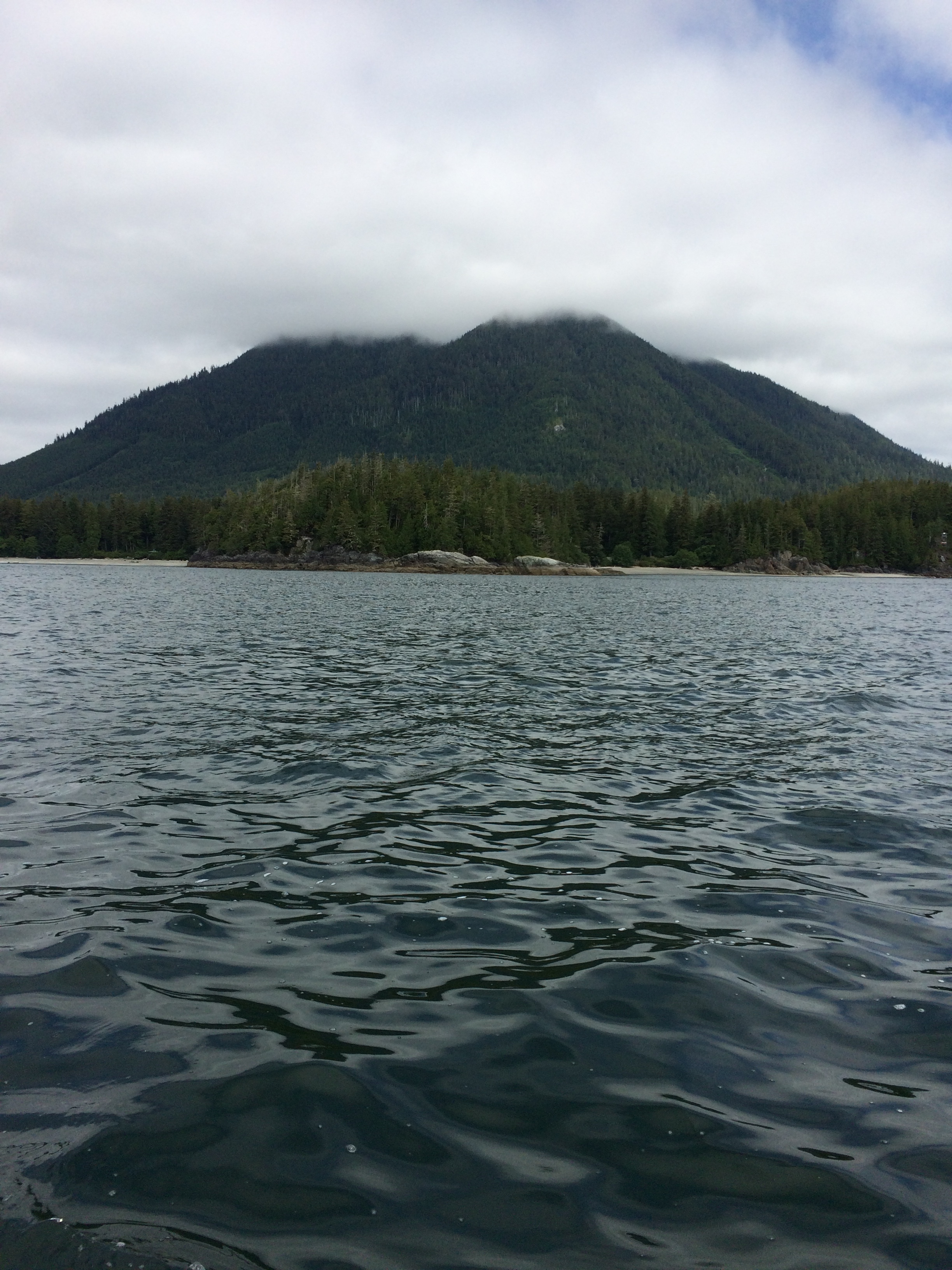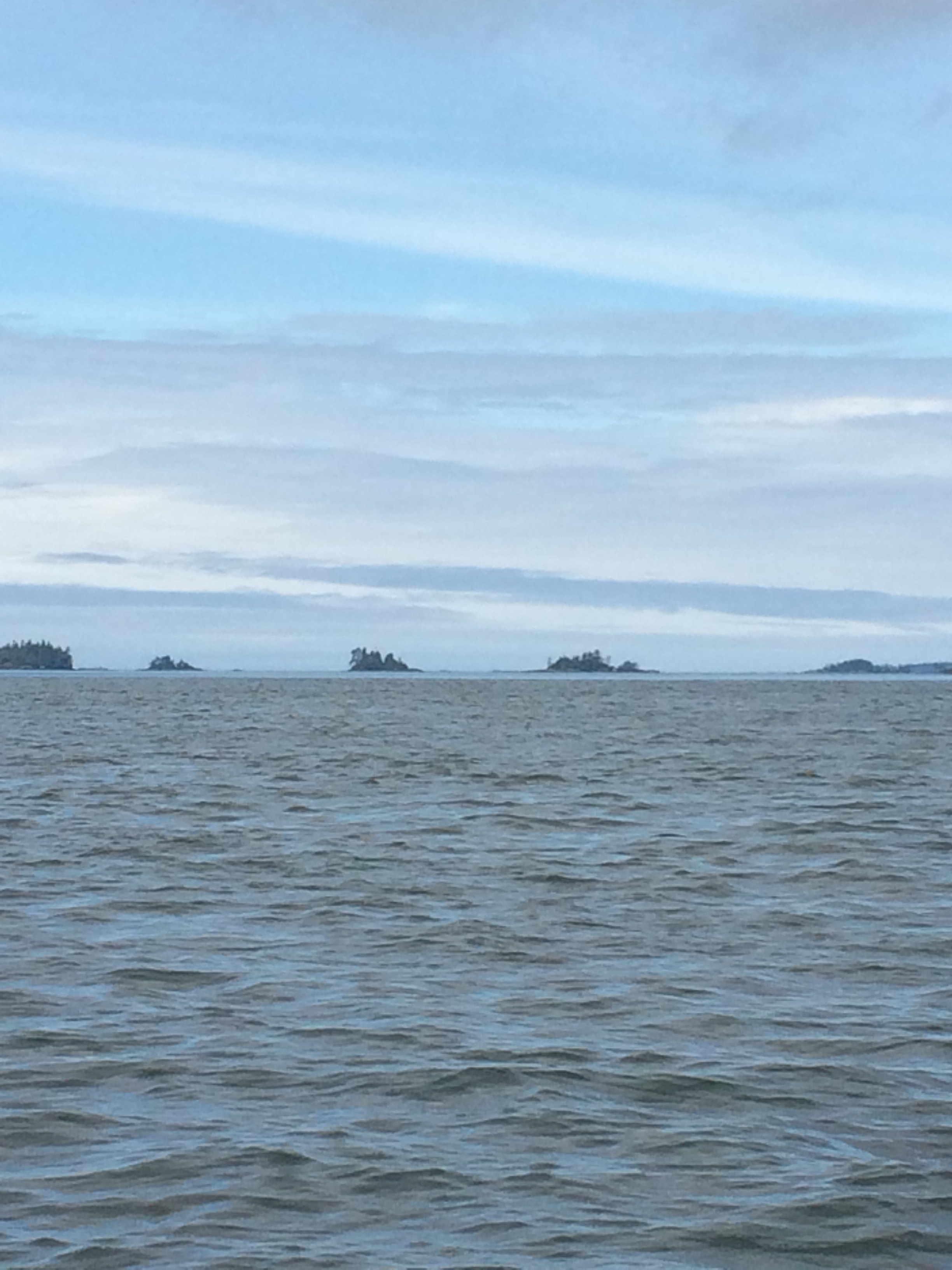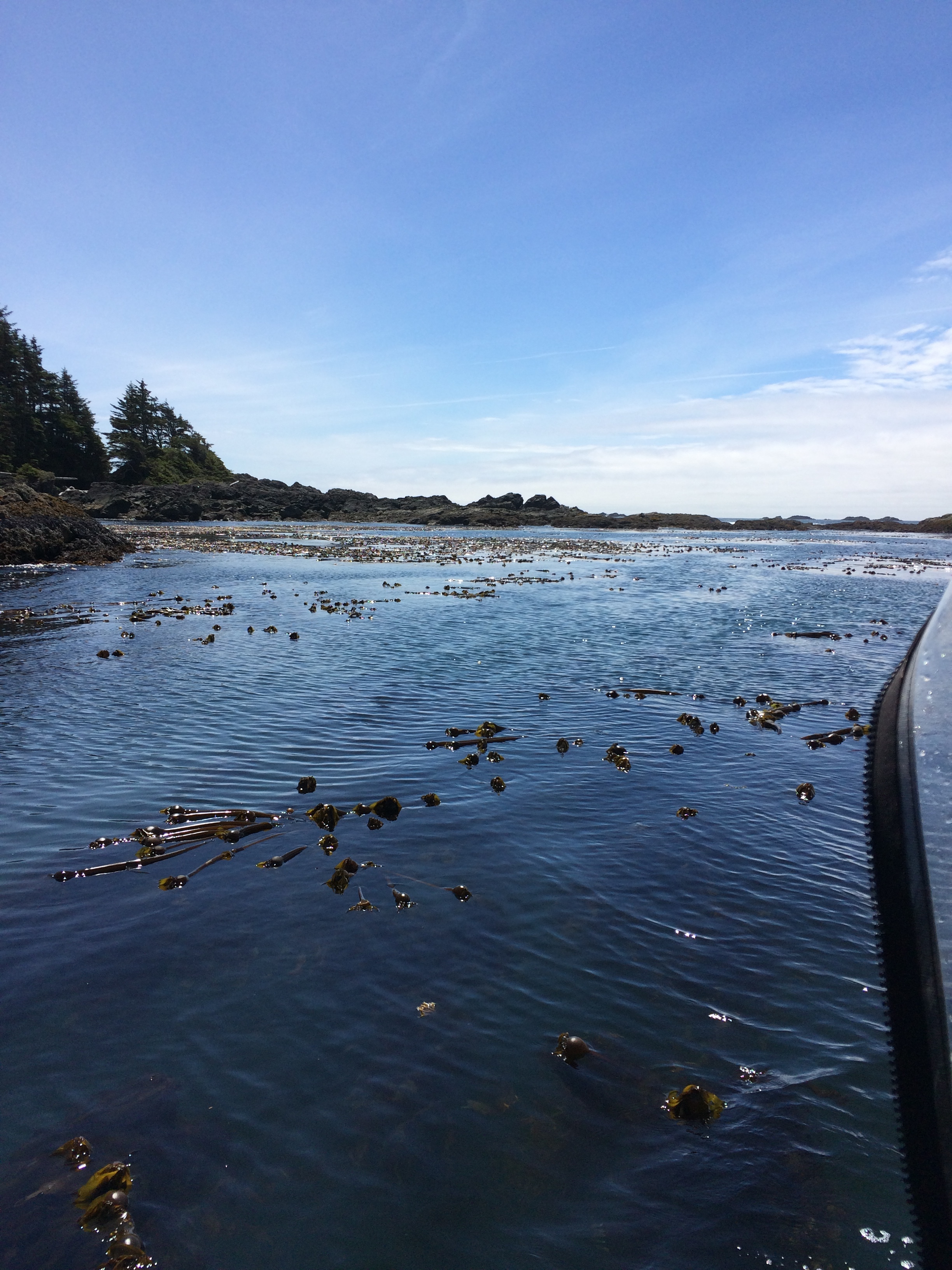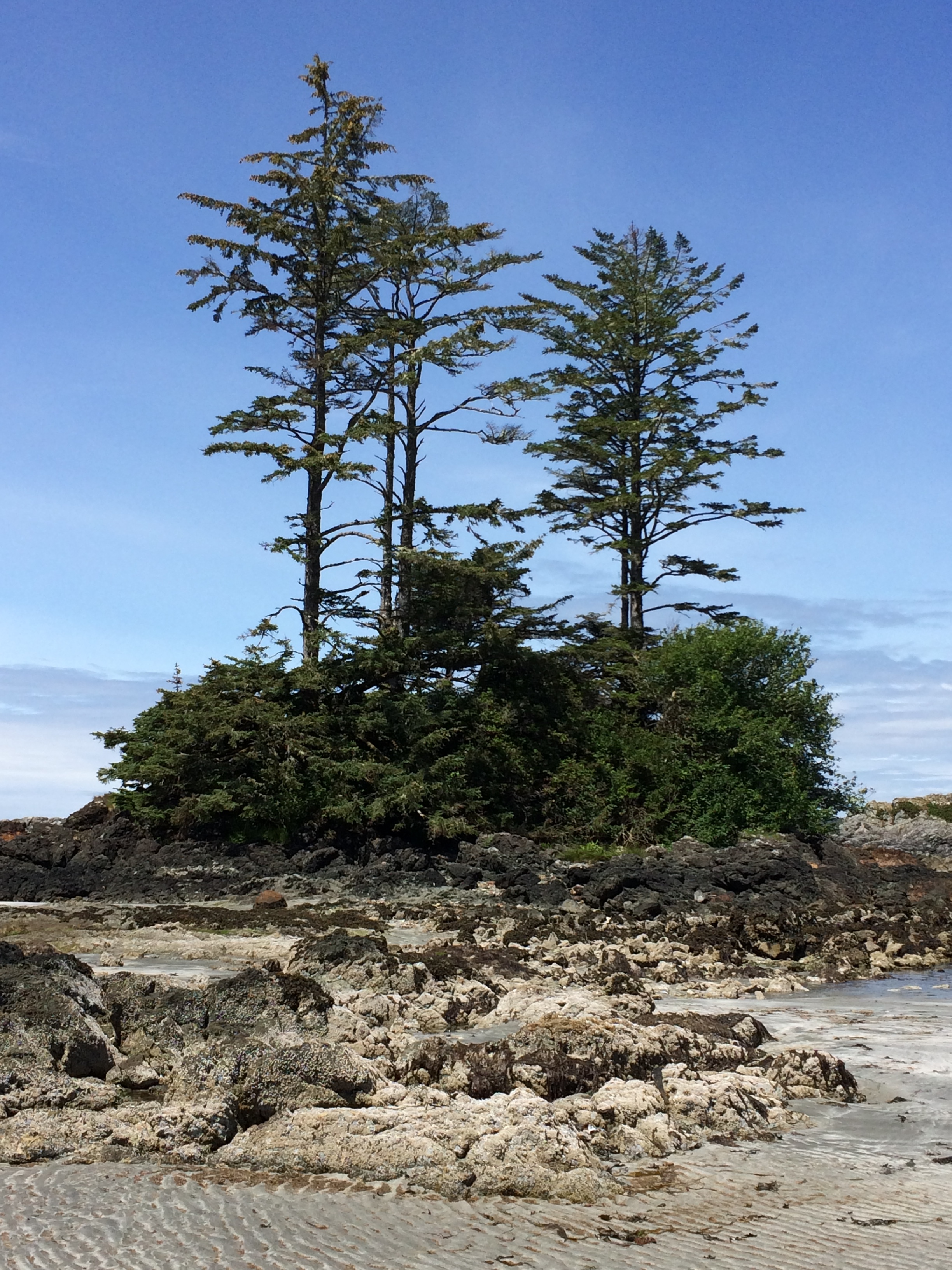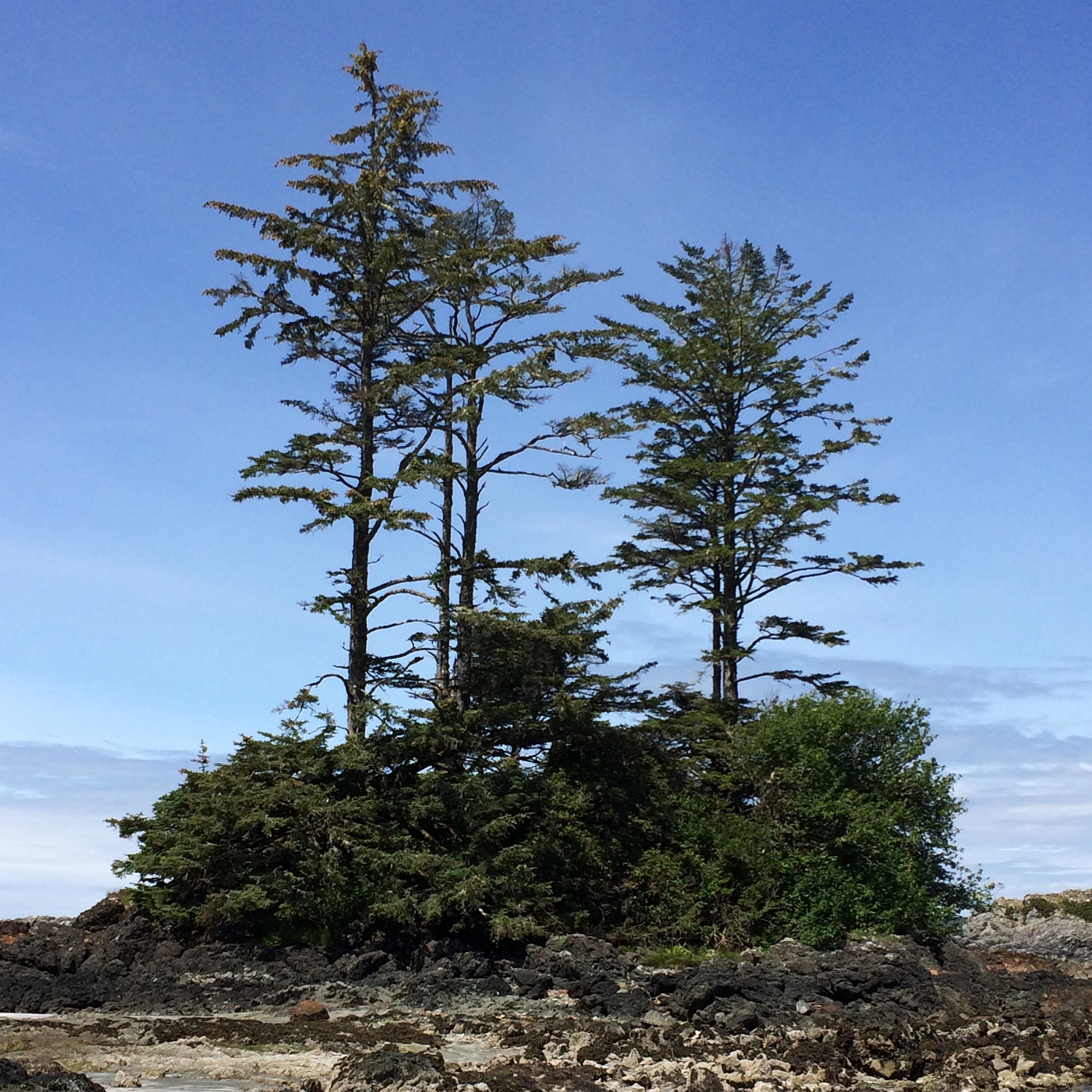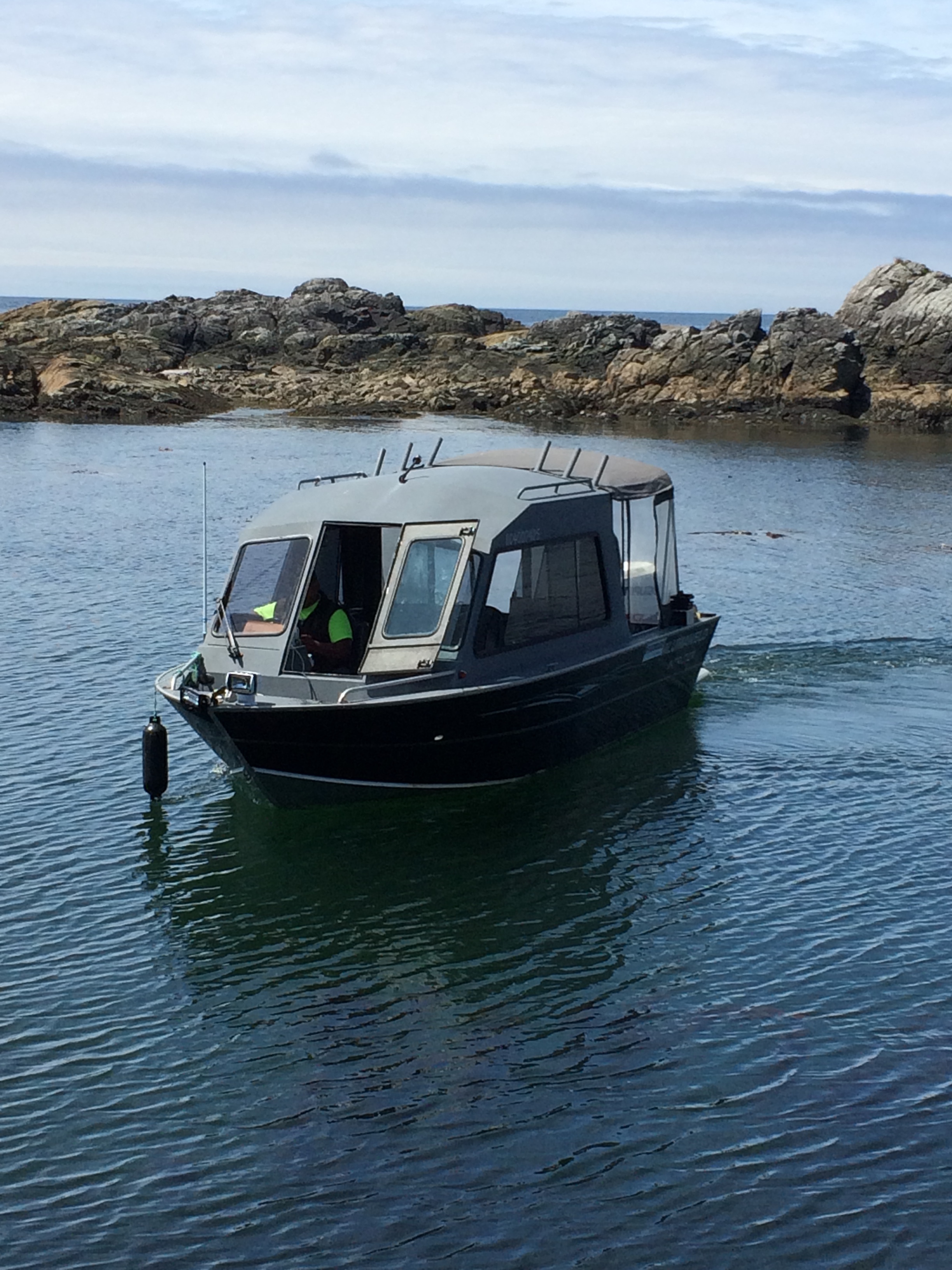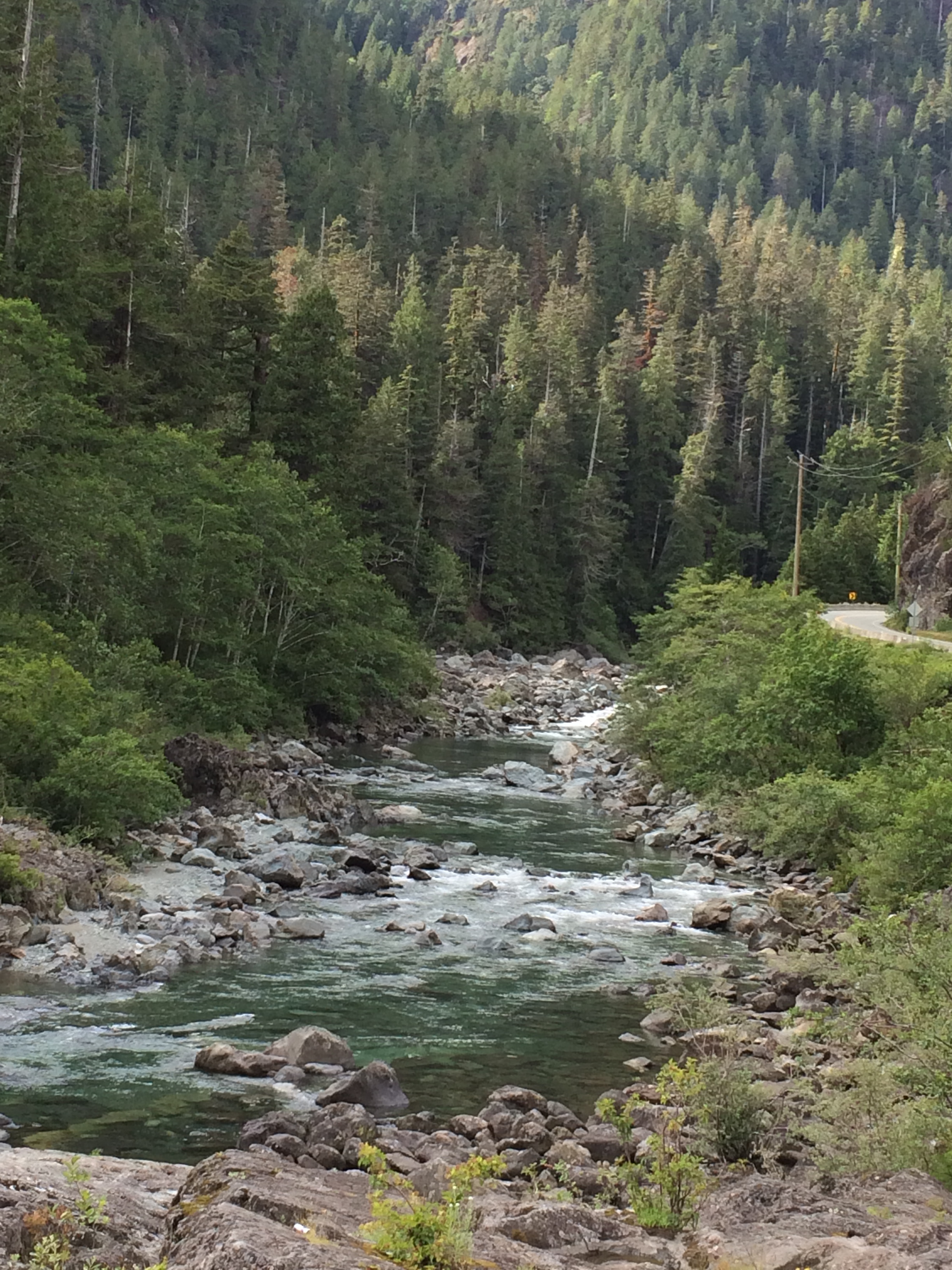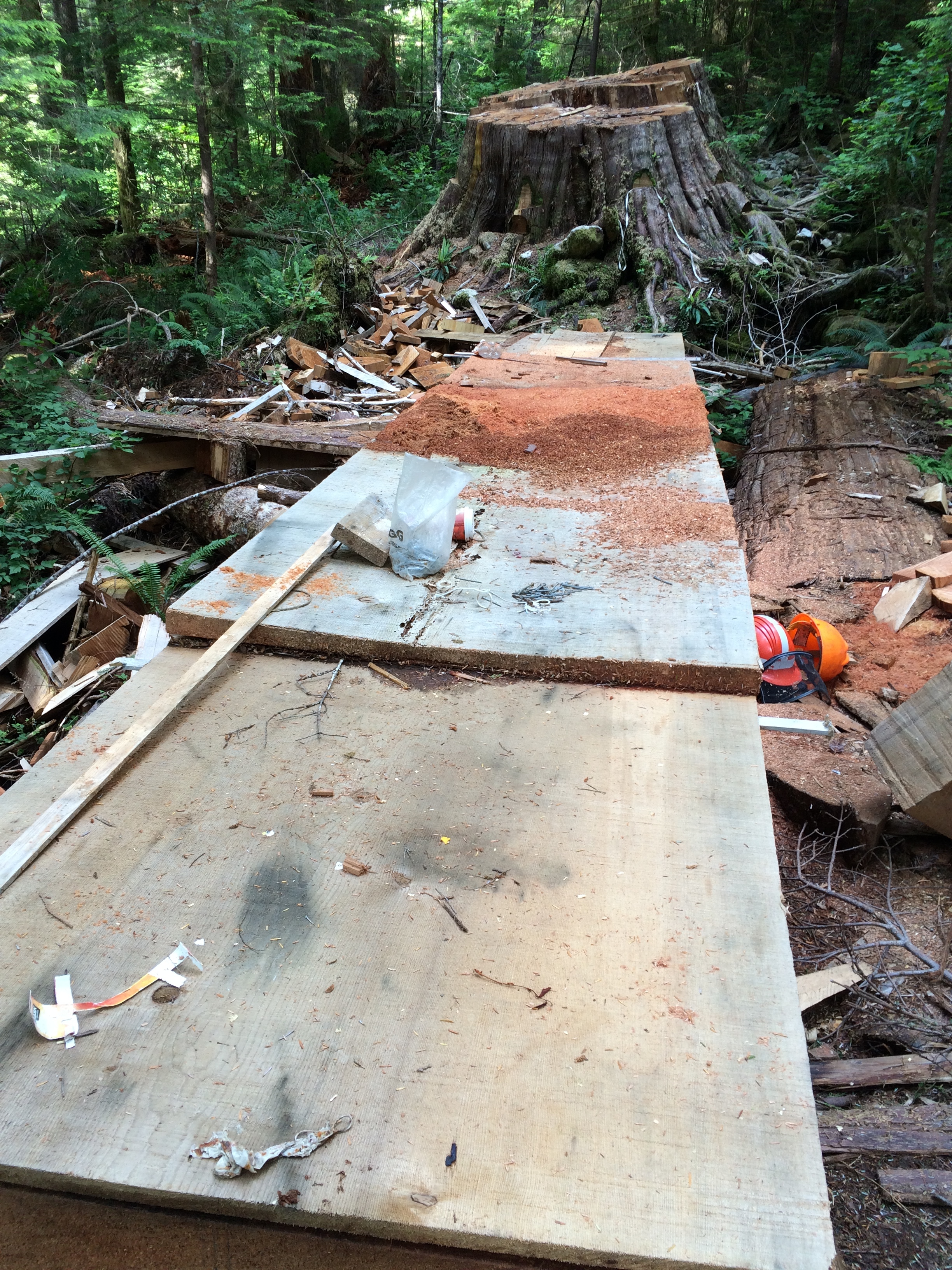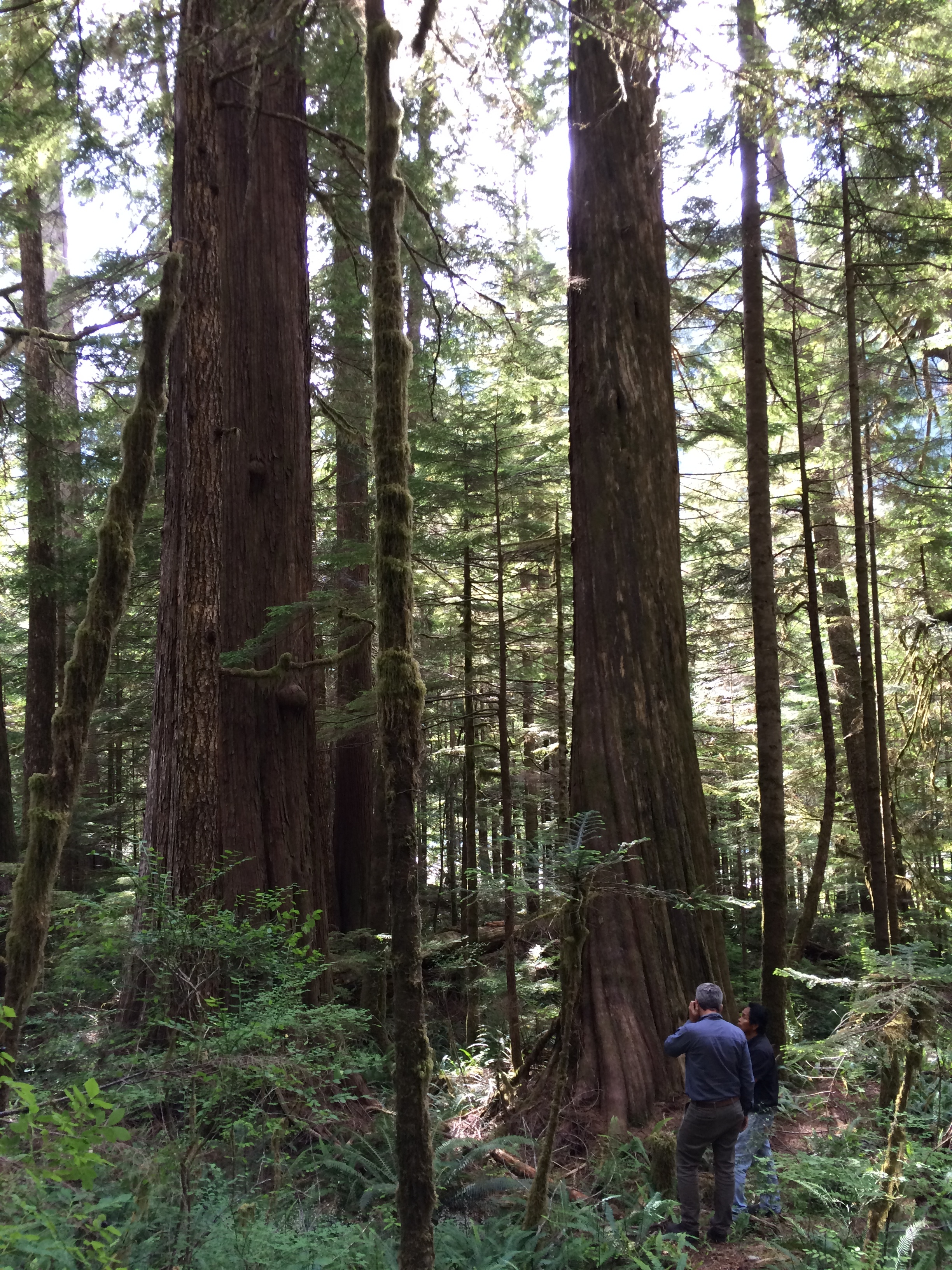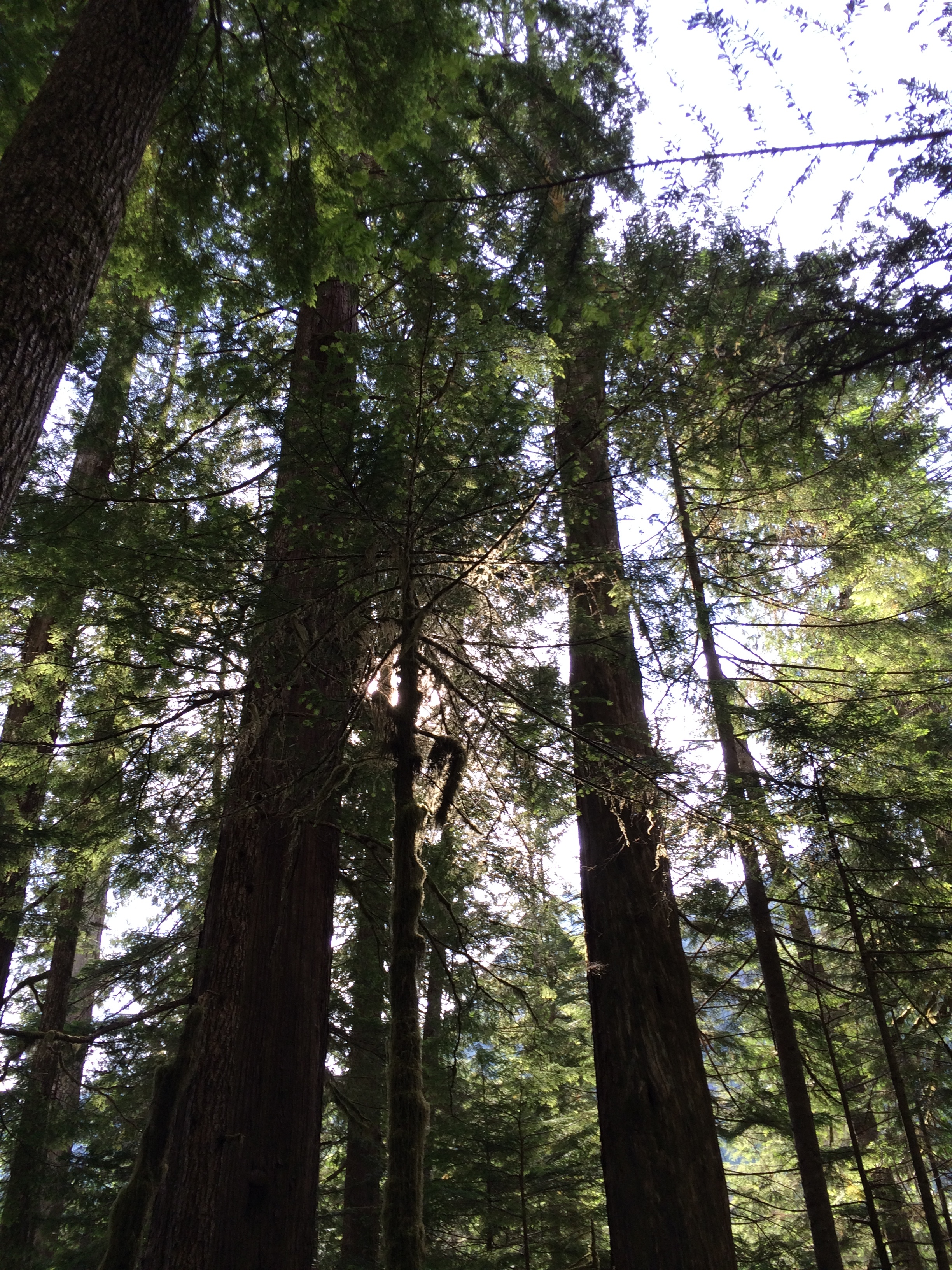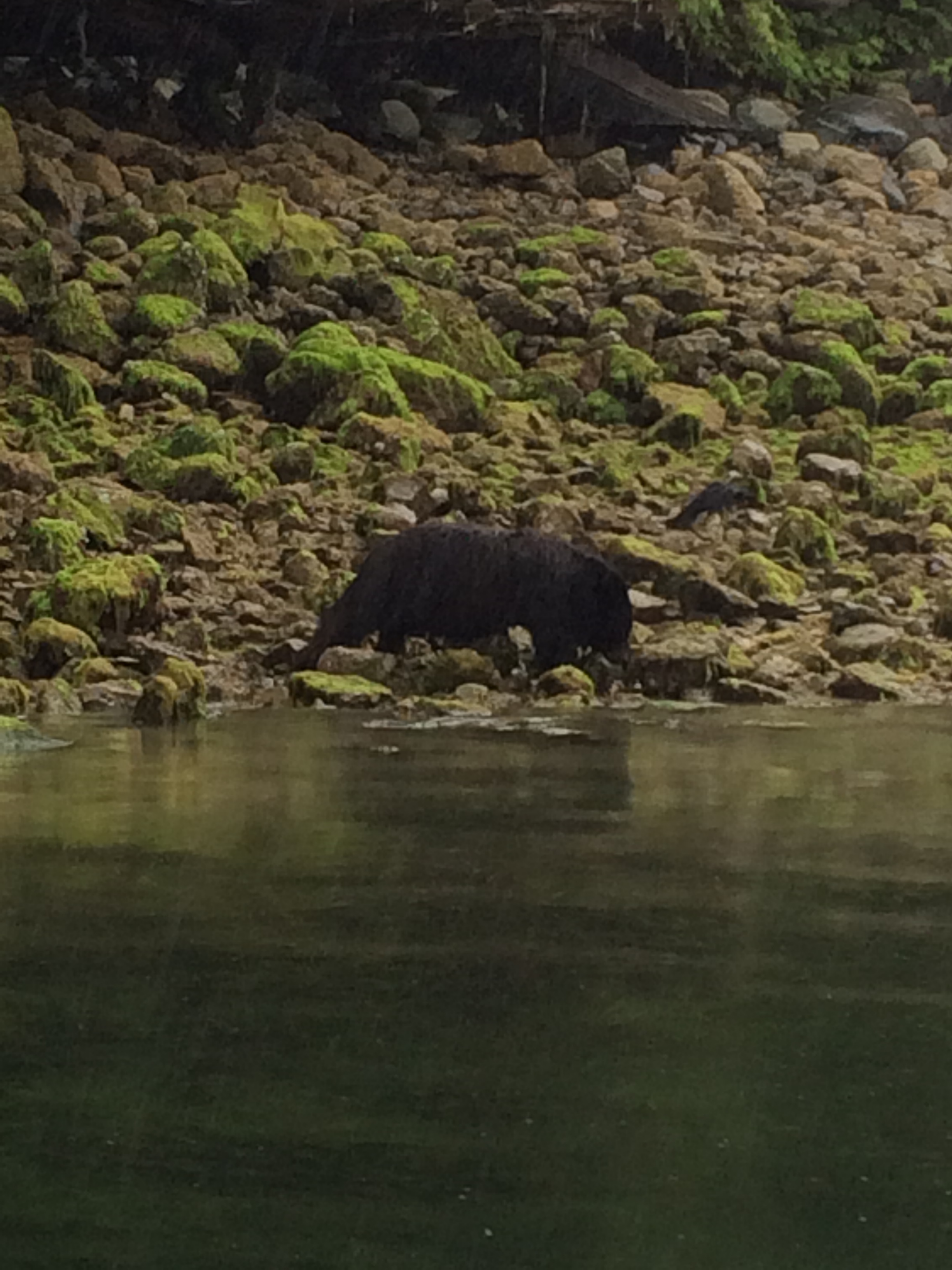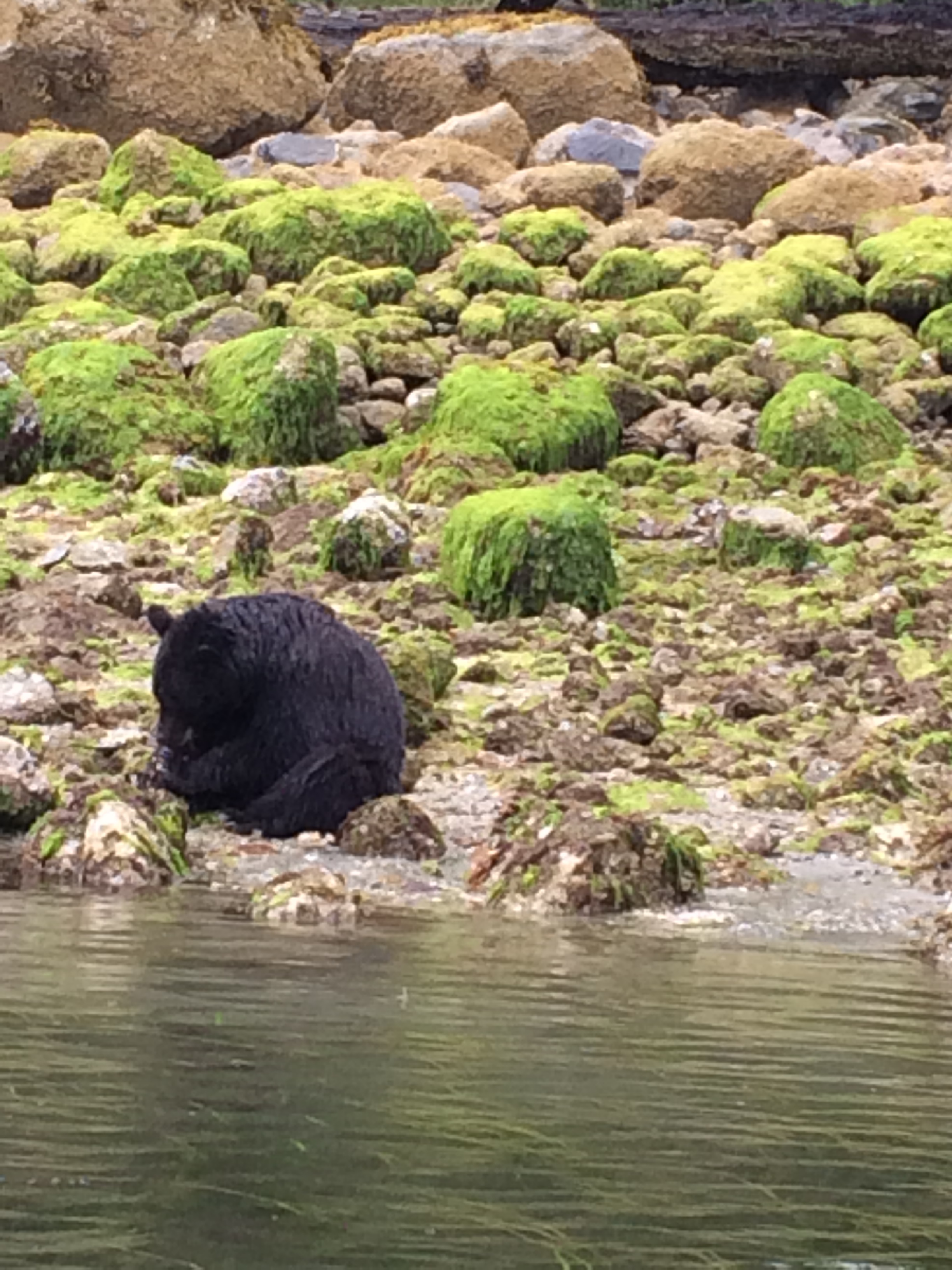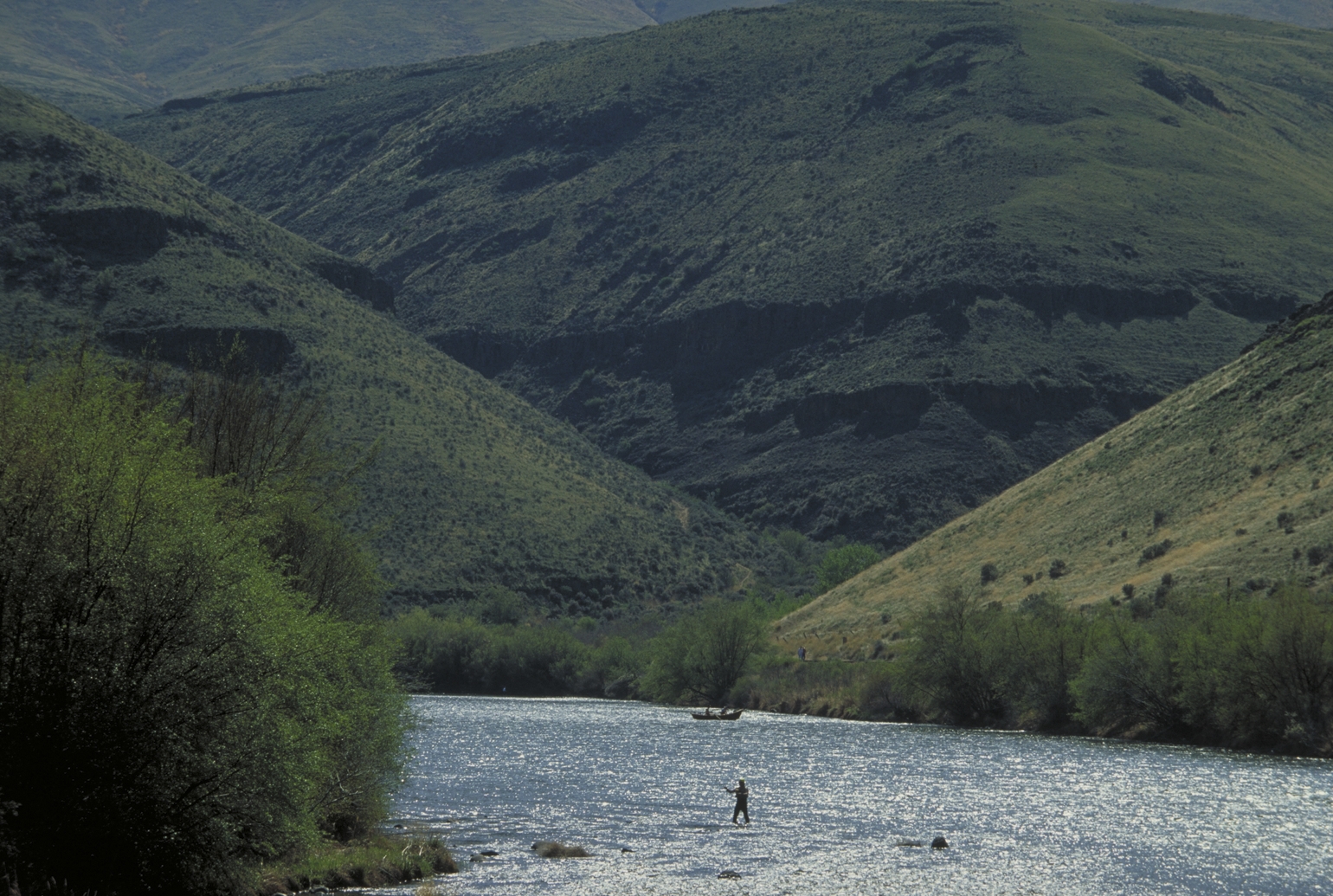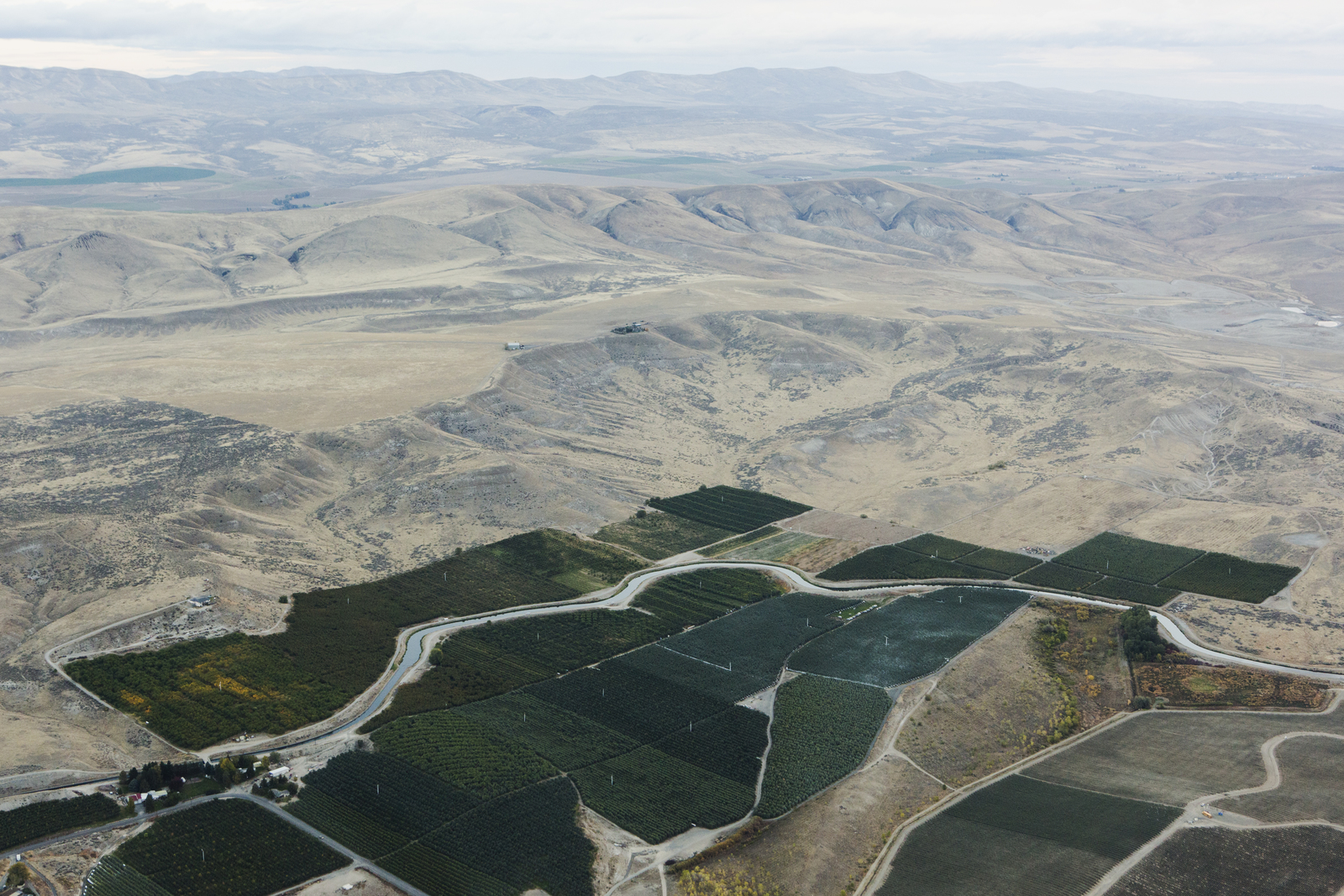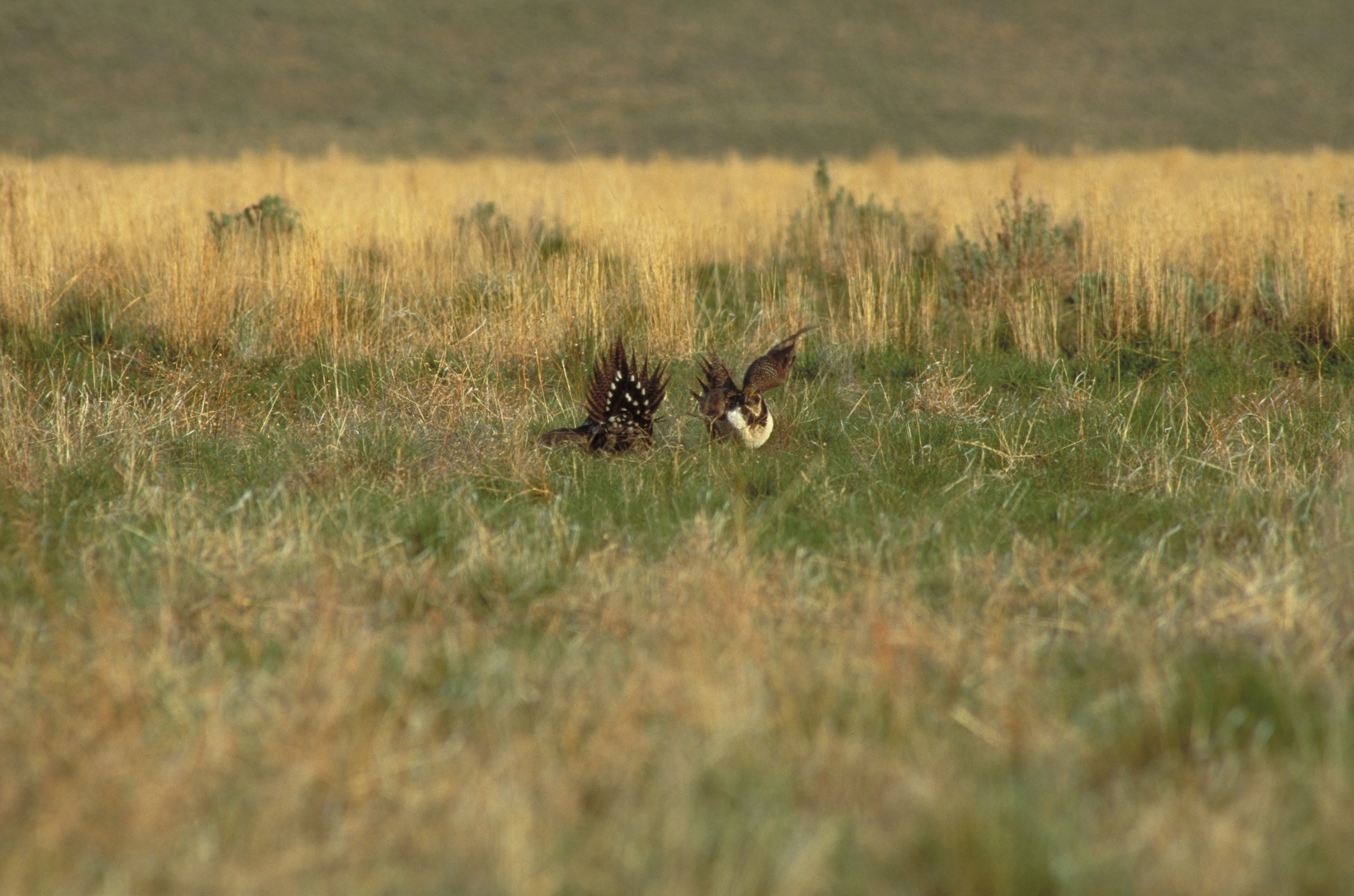Join our coastal field forester for a spring discovery hike in the Hoh Rainforest.
Camping in Paradise
Written & Photographed by Carrie Krueger, Director of Marketing, The Nature Conservancy in Washington
Clayoquot Sound, on Canada’s Vancouver Island is a spectacular place of sea and forests, centuries of culture, and home to First Nations with deep connections to the land and water. As the region’s indigenous people look for ways to protect cherished natural resources they are also sharing the area’s abundance with others. One example: The Lone Cone – a campground and hostel located in the heart of this rich ecological treasure and open to all to enjoy.
A short boat trip takes visitors to the Lone Cone, for camping, dormitory style housing or even private rooms along with a community kitchen, game room and hot tub. But it’s the access to nature that attracts visitors – from tents with a view to hiking trails and beaches, nature abounds. Kayaks, paddleboards and mountain bikes are available as part of the eco-tourism experience.
The Lone Cone is an example of community based conservation that protects nature while creating local economic opportunities. The site has created more than 20 jobs and attracts visitors from around the world. It is run by the Ahousaht First Nation which has plans for other sites and attractions in the area.
It’s a tiny piece of the vast Emerald Edge, a Nature Conservancy priority that spans from Washington, through British Columbia and all the way to Alaska. The landscape holds the largest intact coastal rainforest and is of massive ecological importance to the world. Through our work we are committed to partnership with indigenous and local people to heal the lands and waters while creating new opportunities for local wealth creation, economic development and entrepreneurship.
LEARN MORE ABOUT LONE CONE
LEARN MORE ABOUT OUR WORK PROTECTING THE EMERALD EDGE
No joke: Compromise on Eastern WA Water and Lands
Guest post by Nicky Pasi, Conservation Outreach Associate, American Rivers
Photographs by Keith Lazelle; Benj Drummond/LightHawk
There are so many proverbs, pithy quips and wry one-liners about western water conflicts, you could bind them up in a respectably thick book. But here’s a new one, less of a joke than it might seem:
“An irrigator, an environmentalist, and a tribal member walk into a Senator’s office … and the room doesn’t erupt?”
Question mark intentional. It’s an unexpected scenario, but it’s exactly how the people of the Yakima Basin have decided to address their many, often conflicting, demands on water.
- Since time immemorial, the Yakama Nation has gathered, fished, and hunted here, and retain the rights to do so today.
- Ours is the most agriculturally productive basin in Washington, generating about $4 billion in crops and jobs every year.
- The proximity of our mountains, rivers, trails and canyons to the densely populated Puget Sound makes the Yakima a popular destination for folks searching for connection with nature and the outdoors.
All of these needs – tribal, agricultural, recreational, environmental - are kept afloat by the Yakima River. And all are threatened by climate change.
Warmer winters and hotter summers empty our reservoirs, prevent snowpack from accumulating to refill them, and raise in-stream temperatures to dangerous highs. Drought threatens salmon and trout, while farmers let fields fallow and orchards die, and fires keep hikers out of the woods.
That’s a lot of struggling users, and in 2009, the groups advocating for each did something really extreme. They stopped throwing rocks (read: lawsuits) at one another. They came out from behind entrenched positions. They mapped out their needs, compared those against their wants, and went to work negotiating between the two.
The result was the Yakima Basin Integrated Plan, a compromise so broad and interwoven that Deputy Secretary of the Interior Michael Connor has called it “a model – not just for working through watershed challenges, but for any natural resources management [issues].”
These stakeholders – our irrigators, environmentalists, tribal leaders and management agencies- took their plan to Senator Maria Cantwell, who recognized the importance of such an unusual partnership. In 2015 she and Senator Patty Murray introduced legislation to provide federal authorization for the first decade of Yakima Plan projects.
Last November, the Yakima Bill unanimously passed out of the Senate Energy and Natural Resources Committee. In April, it was amended to the Senate Energy Policy Modernization Act of 2016 (also unanimously), which then passed out of the Senate by a vote of 85-12. As the Yakima Herald Editorial Board put it, “the success of [the Yakima Bill] so far speaks to the collaboration of the various stakeholders and the bipartisan cooperation of the state’s congressional delegation.” The Energy Bill now moves on to the House of Representatives, where Yakima Basin Representatives Reichert and Newhouse set the stage by introducing a companion Yakima Bill back in February.
So here’s the punch line, which isn’t actually a punch line at all, but rather the thread that ties the whole package together: cooperative compromise.
As with any compromise, there is give and take. No one gets 100% of what they want, but they’ve determined what they need, and where those needs overlap.
Because the plan recognized the needs of water users and eastern Washington county commissioners, these people backed environmental priorities of the Yakama Nation and an environmental coalition led by American Rivers, The Wilderness Society and Trout Unlimited.
On that front, we have protected 50,000 acres in the Teanaway, now Washington’s first Community Forest, complementing parallel forest conservation efforts of partners like The Nature Conservancy. In exchange for protective designations, private citizens keep access to wild areas and enjoy better management of facilities.
It’s a network as complicated and vital as the ecosystems we’re striving to protect, all moving forward on a consensus built on compromise.
That’s no joke, but it’s worth smiling about.
Ancient Lakes in Vivid Color: The June Photo of the Month
Guest Blog: A quiet beauty hidden in Quincy, Washington
Written and Photographed by Mitch Pittman, Northwest Photojournalist
More vivid than the colors of the sunset are the memories that surround it. Rain was forecast for the Western side of the state, so my friend Erin (pictured) and I headed towards Quincy, Washington and a little cluster of lakes we’d heard about on social media.
Ancient Lakes is unlike any other place I’ve been to in Washington - towering cliffs conceal the farmlands above and take you back in time, coyotes scamper through sage brush, waterfalls appear out of nowhere to spill down the walls and fill the air with a soft roar, and at the back of this broad valley are the lakes.
After exploring an upper valley, we started to head back to the car just before sunset and found ourselves on top of the main waterfall right as the real show began. My mind, let alone my shutter finger, could hardly keep up with the brilliant, glowing air around me. Within minutes, this shot appeared out of the dull desert grey. After I snapped this, Erin shouted for me to turn around - a rainbow against a tangerine sky! From there the pinks, purples, blues, and yellows just kept coming.
I realized a few minutes in that even trying to capture the full beauty of what was happening around me was pointless, so I eventually set down my camera and simply enjoyed the rest of the show in silent awe with my dear friend.
Those are my favorite images of the day.
Mitch Pittman lives in Seattle and works as a reporter and photojournalist for KOMO 4 News, but many of his favorite stories to tell are during his time off exploring the beautiful areas of this state. You can follow his trips on Instagram (@mitchpittman) or on his website.
Community engagement critical to conservation
Nature Conservancy team members spend a lot of time in forests, on rivers and on ocean shores. But did you know we also spend a lot of time meeting and talking with people? Community is critical to our work. As we forge a new relationship between people and nature, and shape the future of our state, it’s vital we engage, collaborate and partner with people, as often as we focus on wildlife and get our hands dirty in wild places.
A Critical Conversation
Climate Change was the topic at Seattle City Club’s Civic Cocktail this week. State Director Mike Stevens joined Yoram Bauman, known as The Stand-up Economist, and Rod Brown, co-chair of the governor’s Carbon Emissions Reduction Task Force, to discuss one of the most critical issues of our time. Topics ranged from what we know right now about the impact of climate change, to Governor Inslee’s carbon tax proposal. An engaged audience asked important questions creating a dialog that will inform our work, which is deeply impacted by climate change.
A Community that Cares
Meanwhile across the Cascades, we hosted the first of three open houses about our acquisition of 48,000 acres of land in the areas. Community turnout in Cle Elum was terrific and we had a great dialog about how the land is used, what people in the area value and how we can manage the land to benefit nature and the community. We deeply value the level of engagement we got, particularly as we broke into small groups. We were able to hear from and learn from everyone. We look forward to upcoming meetings in Ellensburg and Yakima.
Energizing Expertise
Innovative solutions for people and nature were shared at a Floodplains by Design workshop attended by more than 160 people last week. Together they shared mutual concerns and worked towards a regional vision for Puget Sound’s rivers and floodplains. The Nature Conservancy organized the event and with partners, shared experience and expertise with the diverse attendees. These workshops are an important opportunity for us to connect directly with those who can benefit most from this model program.
Taking Flight in a Special Place
Finally, last weekend gave us several beautiful days to be part of the Snow Goose Festival in Stanwood. Our preserve at Port Susan Bay was open for bird watching. At our booth we had stimulating conversations with dozens of community members who rely on working lands and value nature. It’s always a thrill to meet people, learn about their interests and share our work with them. These community events are some of our favorite places to connect.
In ten days’ time, we were part of four very different and important conservations in very different places. This dialog helps us shape our work and allows us to make the biggest impact we can across our state. Our work is as much about nature as it is about people. Thank you for being part of the community and the conversation.







